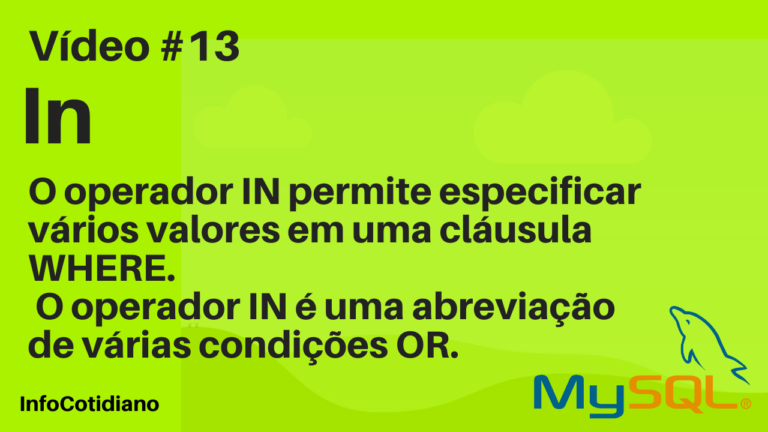A definição de Subselect ou subquery é uma instrução de consulta dentro de outra consulta SQL. Aqui então vai dois
Categoria: Mysql
O MySQL é um sistema de gerenciamento de banco de dados (SGBD), que utiliza a linguagem SQL (Linguagem de Consulta Estruturada, do inglês Structured Query Language) como interface.
https://pt.wikipedia.org/wiki/MySQL
Exemplo prático de como replicar banco de dados MySQL Server.Vou mostrar para você como interligar banco de dados entre matriz
palavra-chave ORDER BY é usada para classificar (ordenar) o conjunto de resultados em ordem crescente ou decrescente.
O operador BETWEEN seleciona valores dentro de um determinado intervalo. Os valores podem ser números, texto ou datas.
O operador IN permite especificar vários valores em uma cláusula WHERE. O operador IN é uma abreviação de várias condições
Aprenda usar o comando Like para filtrar suas pesquisas. O operador LIKE é usado em uma cláusula WHERE para procurar
Neste vídeo mostro como usar o comando Join nas consultas SQL Diferenças entre o inner join, left join e right
Aprenda usar o comando Where Link para download da base (dump) de teste: https://www.mediafire.com/file/graisrjnuj4mr7h/Aula_MySQL.zip/file
Neste vídeo mostro como usar o comando delete e truncate, explicando a diferença de ambos.
O comando select serve para você obter os registros cadastrados em uma ou mais tabelas.









